10 Product Recommendation Examples for Inspiration in 2025
Interested in seeing some product recommendation examples from e-commerce stores for inspiration?
In this article, we’ll provide ten actionable examples of product recommendations that you can implement in your online stores in 2024.
TL;DR
- Product recommendations are important for e-commerce brands because they can improve the customer experience in finding the right product and increase your store’s conversion rate.
- Personalized product recommendations can make 28% of your customers more likely to buy, and 56% of shoppers are more likely to become repeat customers.
- Some of the most used product recommendation types are personalized home page recommendations, ‘’frequently bought together,’’ and real-time product recommendations.
- There is an emerging product recommendation approach where merchants set up AI-powered sales assistants to help customers find the right product for their needs.
Why Product Recommendations Are Important?
Product recommendations are important for online stores and customers because they improve the customer experience and can increase your store’s conversion rate.
These recommendations offer a personalized shopping experience for customers by tailoring suggestions to shoppers based on their:
- Product preferences.
- Browsing history in the online store.
- Purchasing behavior.
Brands are harnessing AI's power to make real-time data-driven recommendations as shoppers are browsing (more on that later).
💡 Personalization statistics show that personalized product recommendations can make 28% of customers more likely to buy a product they did not intend to buy initially.

Example: Wyze uses Big Sur’s AI-powered product recommendations to increase its conversion rate.
These recommendations not only improve the shopping experience with relevant product suggestions but also improve customer retention.
Your customers will feel understood and will know that your brand has an idea of what would be a good fit for their needs.
This is why 56% of shoppers stated they are more likely to return to an e-commerce store offering product recommendations.
Product Recommendation Examples for E-Commerce in 2024
There are different product suggestion strategies that online brands have incorporated to increase their conversion rates and improve the shopping experience.
We will cover various types of product recommendations, such as:
- Homepage product recommendations.
- Frequently Bought Together suggestions.
- Personalized recommendations via email.
- Real-time recommendations based on browsing behavior.
- Recommendations via conversations with an AI assistant.
- Etc.
From cross-selling techniques to upsell opportunities, we will cover ten different examples of product recommendations.
💡You should select the right recommendation strategy based on your brand’s business goals (e.g., increase AOVs) and customer behavior (e.g., interest-based recommendations).
Example #1: Personalized Home Page Recommendations
You can personalize your home page to each shopper with personalized recommendations.
Such a level of homepage optimization has been one of the AI use cases in e-commerce that online stores are adopting in 2024.
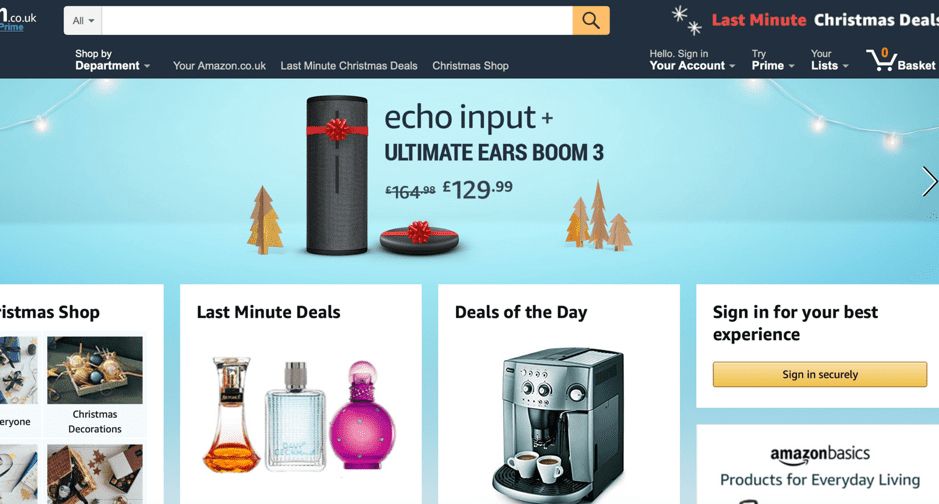
Creating a Dynamic Homepage Experience
AI technology uses customer data, such as items bought so far, to offer personalized product recommendations on the home page of your site.
You can personalize your site’s home page for first-time and repeat visitors, which involves tailoring the recommendations to their specific interests.
Your brand can attract and retain first-time visitors by improving their product discovery experience.
Software: Website personalization tools like VWO can help you personalize your site’s home page to cater to each shopper.
Case Study of Successful Home Page Recommendations
Amazon is an example of an e-commerce store that has successfully implemented personalized recommendations on its home page.
The brand shows shoppers custom home pages based on their product preferences and items bought so far.
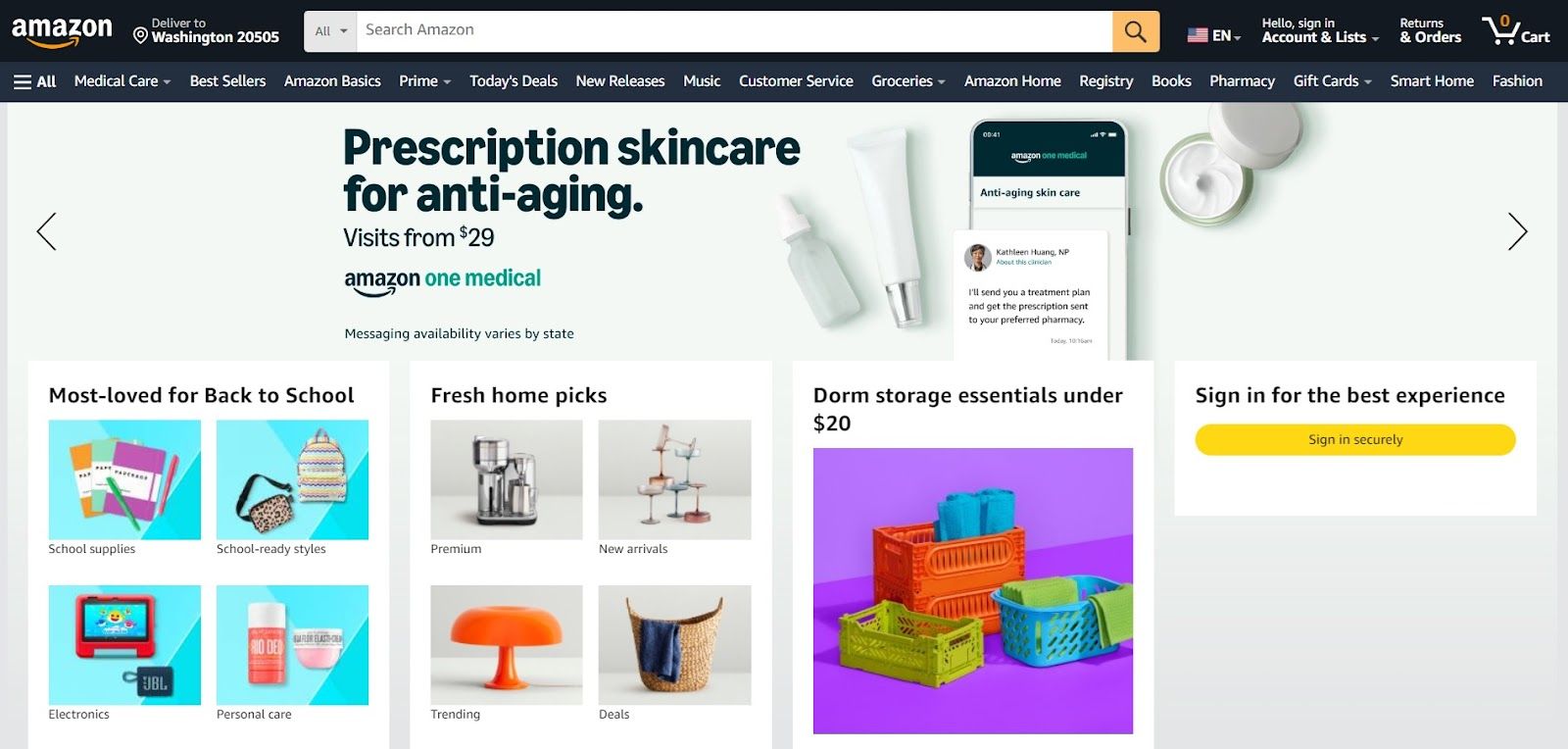
Results: Even though Amazon has not disclosed its results, the company has reported that 35% of its sales come from such personalized recommendations.
And nearly 56% of these shoppers will likely turn into repeat buyers.
Example #2: Frequently Bought Together Suggestions
You can implement ‘’Frequently Bought Together’’ product suggestions on your store to improve your site’s conversion rate and AOV.
The recommendation engine detects when a shopper has a product in their cart and recommends products that complement each other.
Improving Average Order Values (AOVs) with Cross-Selling
Product recommendations can increase your store’s average order value (AOV) by cross-selling complementary products.
AI technology analyzes what products are frequently bought together and can cross-sell products to shoppers, dramatically increasing basket sizes.
💡Research shows that strategic cross-sells can increase the average order value (AOV) by 11%.
Cross-selling does not have to take place only on your website - you can enable personalized recommendations via email, in-app, or targeted advertisements.
Tools to Automate Cross-Selling
Brands like Wyze use product recommendation software like Big Sur AI to increase their average order values with ‘’Frequently Bought Together’’ product suggestions.
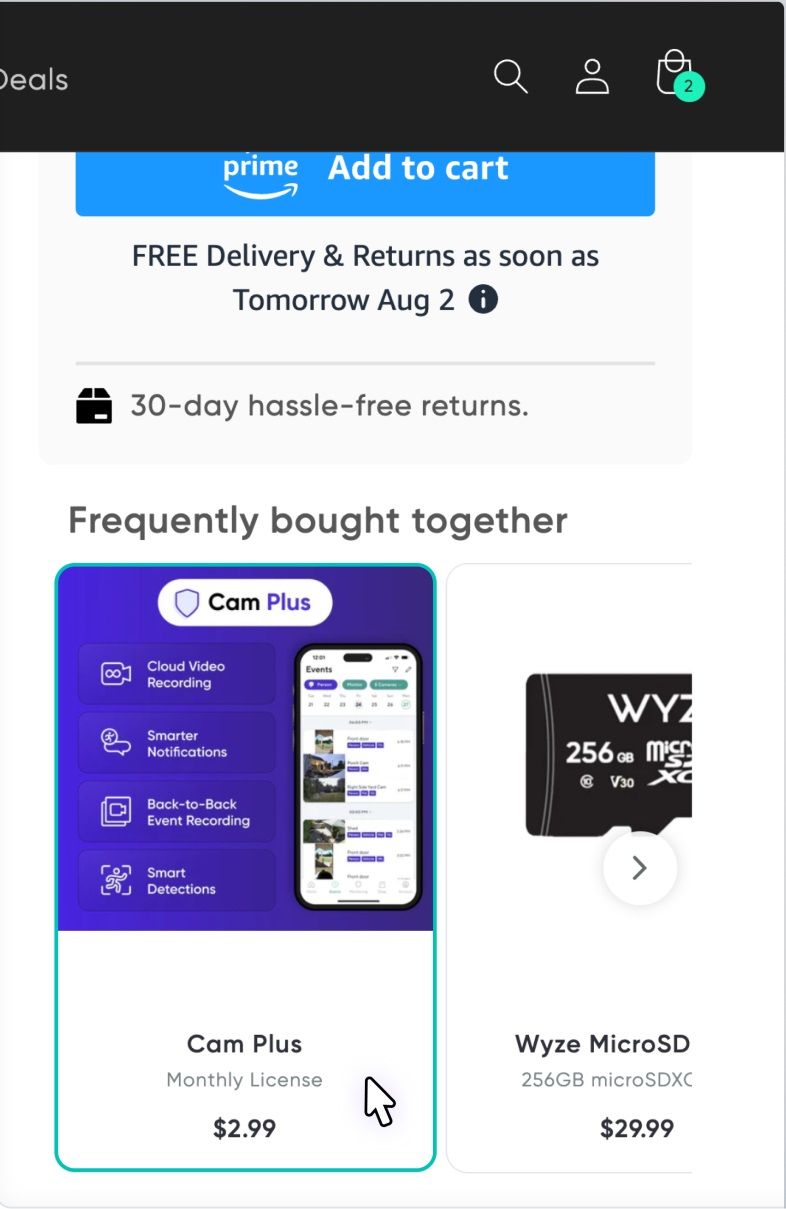
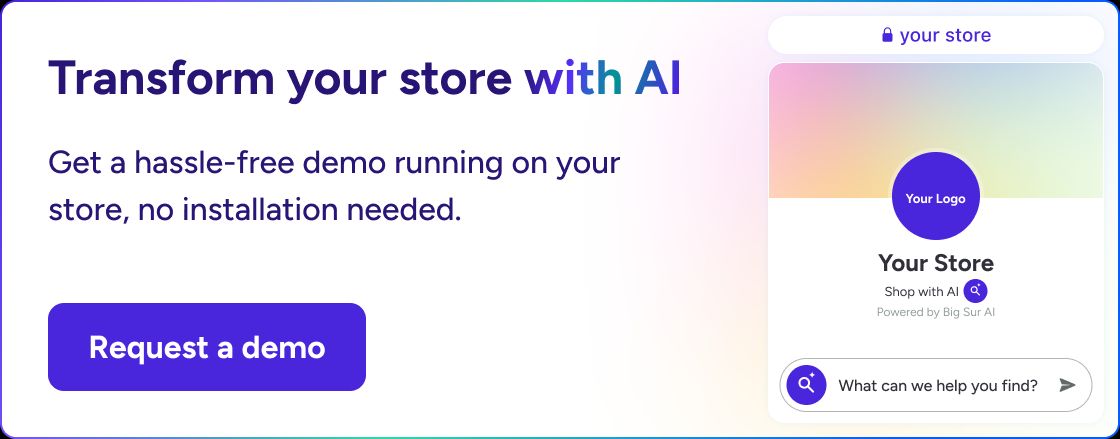
Our software’s ‘’Frequently bought together’’ module appears when a user adds a product to their cart.
➡️ If your store is on Shopify, you can integrate Big Sur AI’s product recommendations in a few minutes. It takes a couple of days for the other CMS platforms.
The tool is an alternative to Bloomreach, which is another product recommendation tool that offers ‘’Frequently purchased together with’’ suggestions:

Example #3: Product Recommendations Via Conversation
Instead of your customers doing all of the manual research of finding and comparing products, you can set up a conversational assistant to help them.
Especially useful for customers with specific preferences, setting up an AI-powered shopping assistant is like having a traditional in-store assistant on your website.
Improve The Customer Experience With a Conversational Experience
AI assistants like Big Sur AI’s Sales Agent re-create the traditional shopping experience of asking a sales assistant to help you choose the right product for your needs.
The tool uses machine learning and generative AI to converse with your shoppers like a real human.
For example, shoppers can ask the AI assistant to recommend a city e-bike for a height of 6’2:
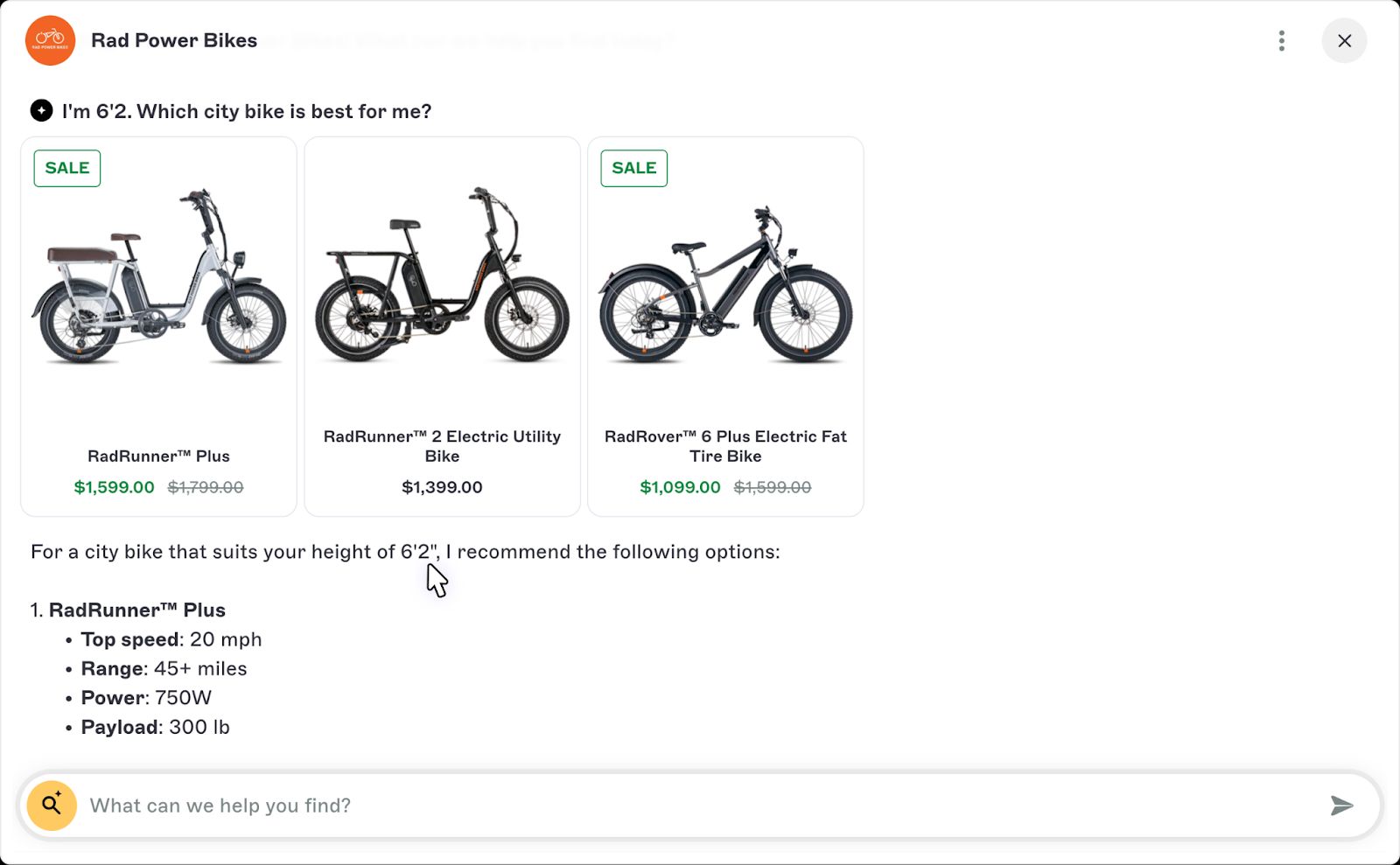
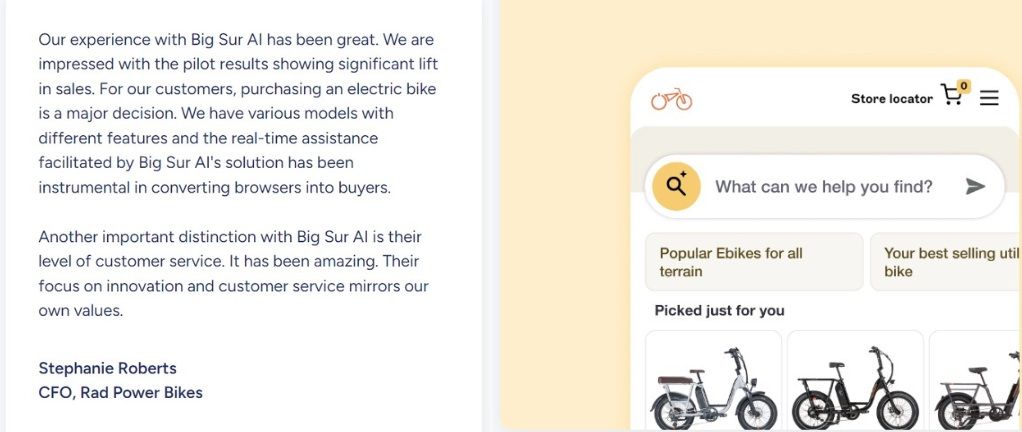
The sales agent then makes product recommendations based on what products from your store meet their criteria.
The software is fed and trained on your store’s product information and can answer complex questions, not just commonly asked ones.
Our tool also places question prompts to nudge your customers to start more conversations.
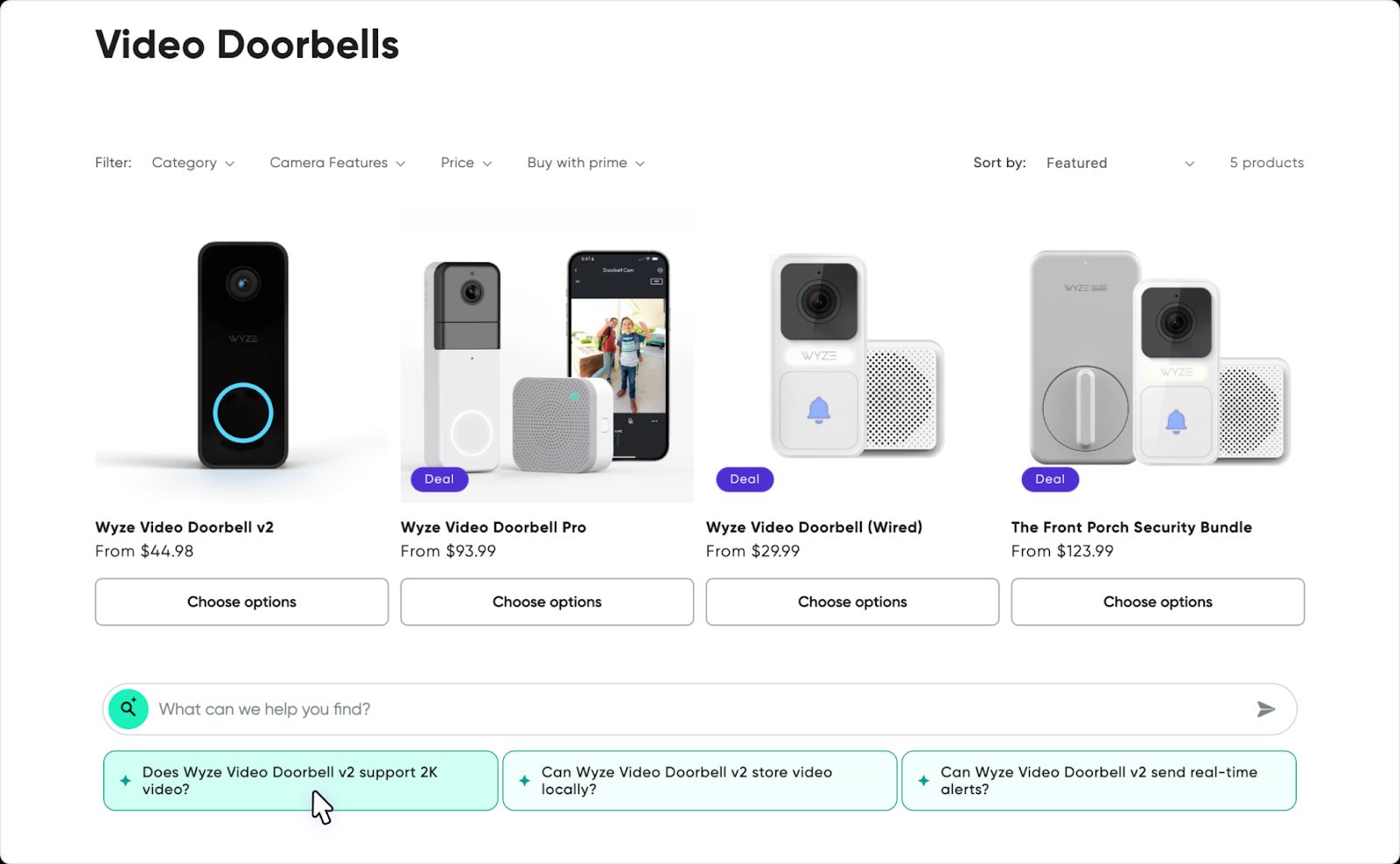
The sales agent analyzes how each customer interacts with your store, predicts which questions they will likely ask, and suggests them on your product and category pages.
Case Studies of Retailers Who Have Implemented AI Assistants
Rad Power Bikes implemented Big Sur AI’s Sales Agent in their store to assist their customers in finding the right e-bike for their needs.
Since buying an e-bike is not easy, customers get product recommendations tailored to their attributes (e.g., budget or height).
Shoppers can even compare alternatives and get detailed breakdowns on what bike would be better suited for them.
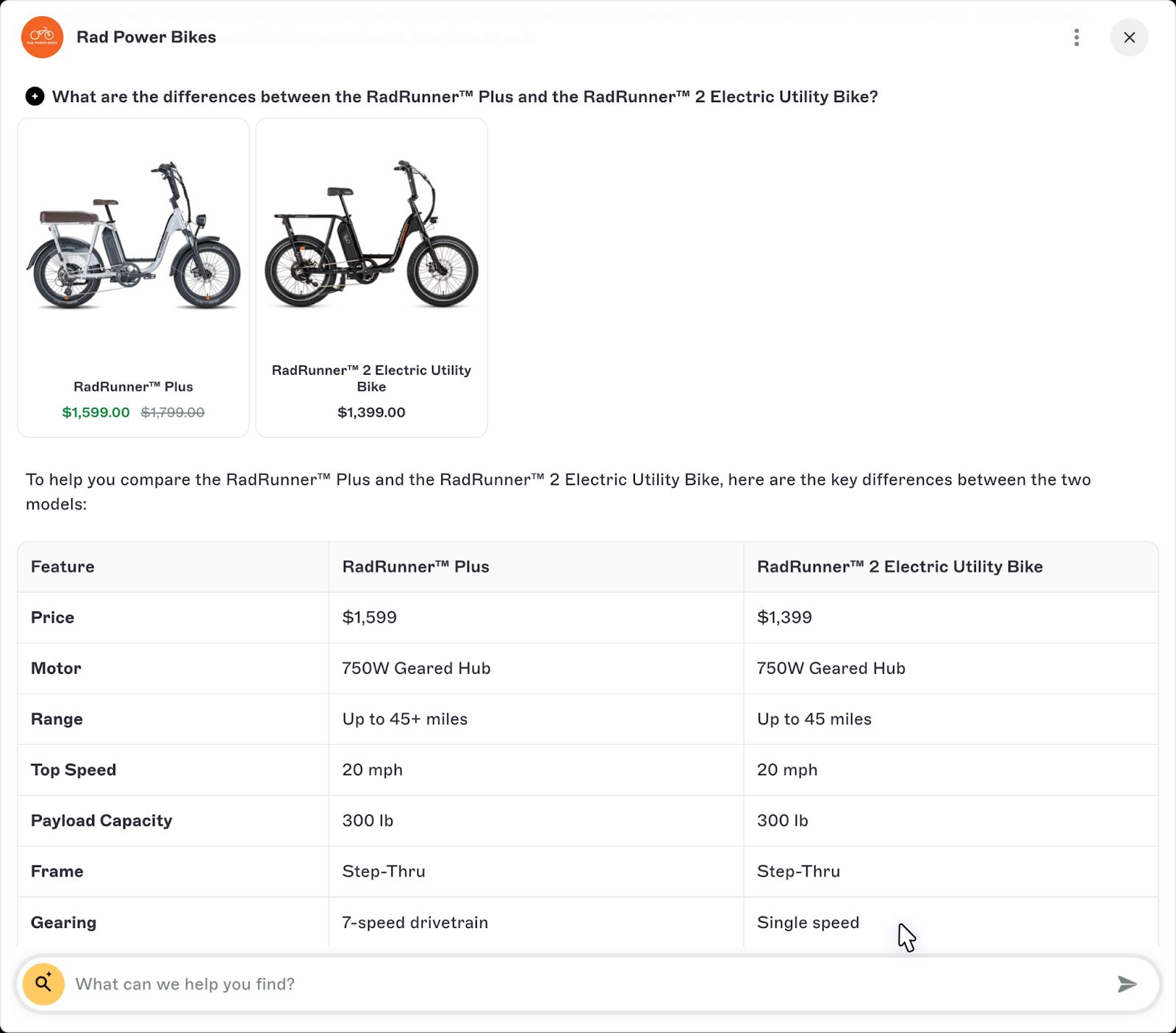
Result: The brand was able to see a 12% conversion rate of customers who interact with the AI assistant.

Another example is Esen, a skincare brand that set up Big Sur AI to help their customers customize a skincare routine for their needs:

Shoppers are getting routine recommendations with a product breakdown, coupled with benefits.
Example #4: Post-Purchase Product Recommendations
After a shopper has converted to your store, you can set up follow-up emails with complementary product recommendations.
Enhancing The Post-Purchase Customer Experience With Emails
The purpose of post-purchase product recommendations is to recommend related products based on what similar customers have bought and what’s popular.
Instead of constantly focusing on new client acquisition, your brand can maximize the customer lifetime value (LTV) by nurturing the relationship with them.
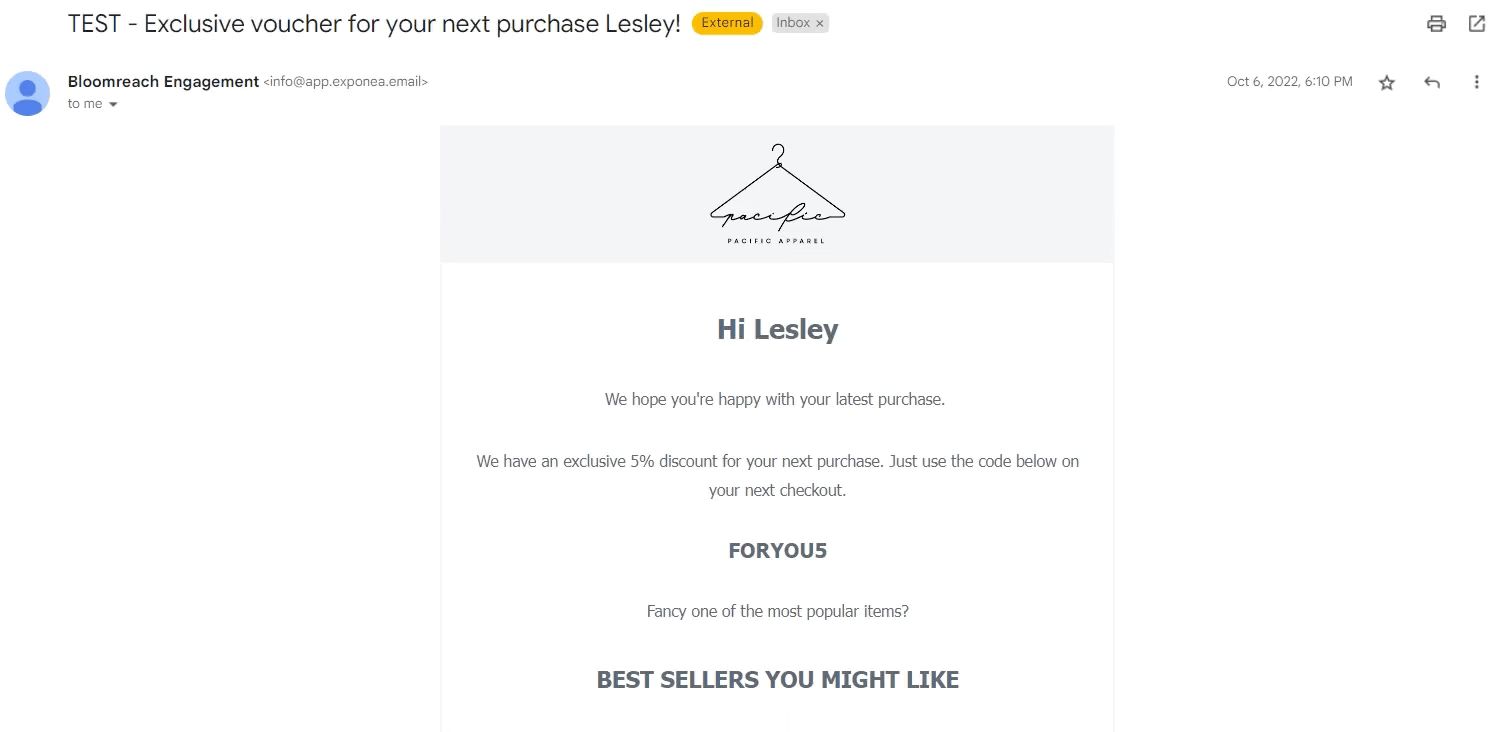
These follow-up recommendations have an impact on customer retention and repeat purchase rates (RPR), as the recommendations are personalized to each shopper.
This is how your store can become your shoppers’ go-to destination for other product categories.
For example, you can improve your store’s post-purchase engagement by sending out personalized discount offers and cross-selling your customers on complementary products they might need.
Utilizing Data for Accurate Recommendations
These post-purchase emails utilize:
- Each customer’s purchasing behavior.
- Currently trending products in your store.
- Items that similar shoppers are buying at the moment.
Example: Inside tools like Bloomreach, you can build a campaign that sends personalized emails to buyers who purchased 14 days ago, giving them a voucher for their next purchase.
Or promoting the best-selling products in a different category that might be of interest to your customers.
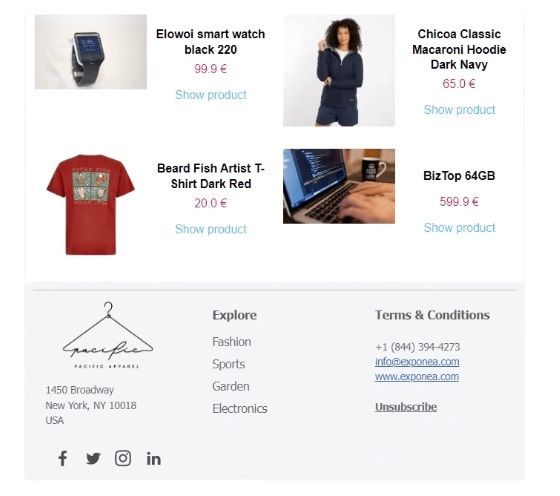
Example #5: Recommendation Banners on Category Pages
You can increase your site’s conversion rates by placing personalized banners with product recommendations on your category pages.
Data from Convertcart shows that category page product recommendations can lead to an additional 1.3% boost in revenue.
Improving Category Page Engagement & Conversion Rates
Brands like Amazon are using recommendation banners to improve their category page engagement and conversion rates.

Such category page optimization is achieved by AI and machine learning algorithms that recommend products to your shoppers based on their behavior.
These dynamic product displays can show:
- Best-selling products in the category that the customer is browsing.
- Recommendations based on browsing history.
- Suggestions based on purchasing history.
Amazon has designed its category page recommendations to promote high-margin products that are based on the shoppers’ browsing history.
The brand is also effectively down-selling customers who are on a lower budget, saving the conversion.
💡Another best practice that is used by other brands is setting up product recommendation pop-ups on their category pages to reduce drop-offs and drive more revenue.
A/B Testing Banners for Optimal Performance
There are conversion rate optimization tools like OptiMonk that let you create and A/B test product recommendation banners.
You can experiment with recommendations, custom offers, and different customer segments and evaluate the results.
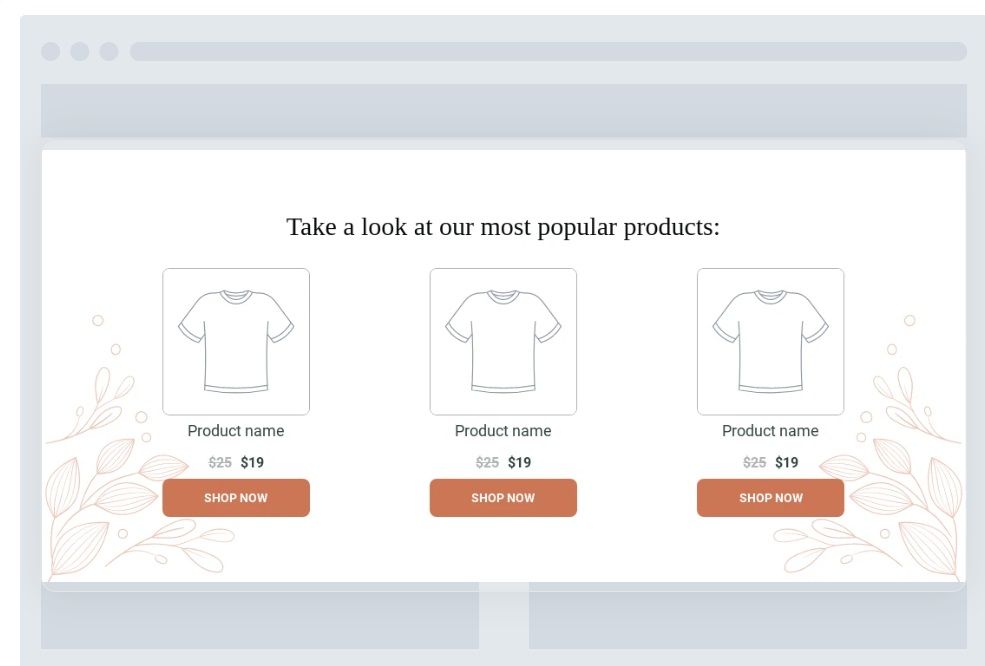
A/B testing is important for increasing your site’s conversion rate, as testing different variables, such as segments and recommendations, can show you what performs best.
OptiMonk uses AI to help you conduct A/B tests for your offers and recommendations at scale by running multiple tests and making adjustments in real time.
You can set up these recommendation A/B tests from the tool’s code-less platform.

Example #6: Personalized Email Product Recommendations
Retailers are sending out personalized emails to make product recommendations to shoppers.
The goal of this email automation is to make product suggestions to your customers so you can improve click-through rates and revenue by subscriber.
Crafting Personalized Product Emails
Personalized email marketing works, as data shows that emails with personalized recommendations improve click-through rates by 25-35%.
This is because the recommendations are tailored to your customers, and they feel understood.
The hard part is segmenting the shoppers so you can send out personalized emails.
➡️ For example, you can segment your customers based on demographics (e.g., age), purchase history, and different engagement levels.
The more precise the segmentation, the more relevant the emails will feel.
You can experiment with different product recommendation emails, but here are the most popular:
- New arrivals recommendations - usually sent to loyal customers, you can continuously up-sell your new collections to shoppers who are likely to be interested.
- Re-engaging old customers - if a customer has not taken action in a while, you can send them personalized product recommendations with a custom offer.
- Past purchase recommendations - personalizing the email for customers who have already purchased, making product suggestions.
For example, Madewell took their shoppers’ previous purchasing behavior to offer product recommendations.

💡These emails do not have to be crammed with dozens of products. You can design your emails with 2-3 spot-on recommendations.
Another example is Orlebar Brown, who incorporated product recommendations via shopping cart abandonment emails.
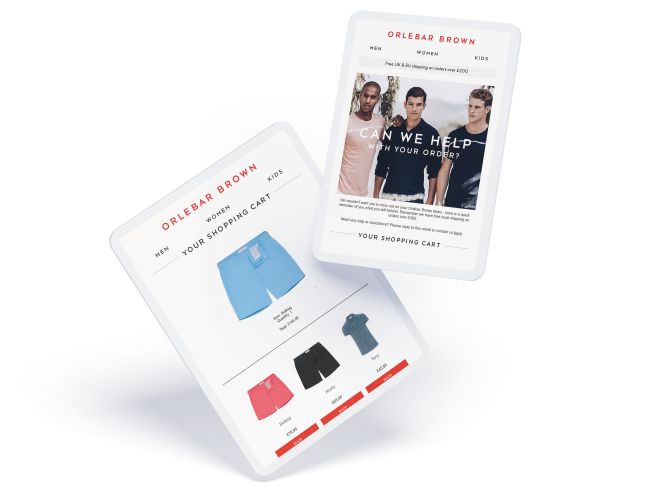
Results: This email flow contributed to a 6.59% increase in sales volume.
Tools for Automating Personalized Emails
An example of an email automation software that can make the magic happen is Klaviyo.
You can set up automated email and SMS flows with product recommendations that are based on customer behavior.
Users of the platform utilize the tool for abandoned cart reminders and win-back campaigns.
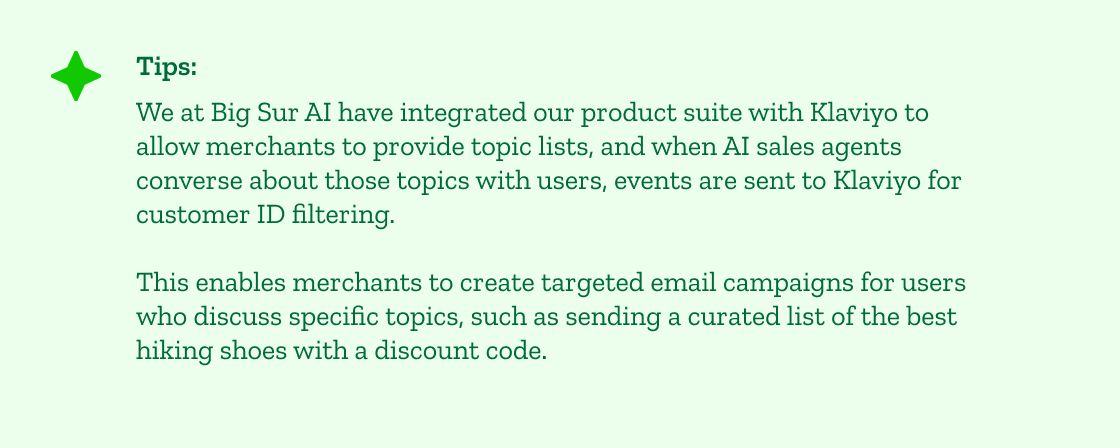
Klaviyo integrates with all major e-commerce platforms and lets you automatically sync all-time historical and real-time data.
Other tools that you can achieve the same effect are ConvertKit and Mailchimp, although Klaviyo has superior AI capabilities.
Example #7: Real-Time Product Recommendations Based on Browsing Behavior
One of the most effective product recommendation types is real-time recommendations that change as shoppers browse through your online store.
These dynamic product recommendations utilize behavioral targeting to offer real-time personalization to first-time and repeat customers.
Using Browsing Data for Real-Time Recommendations
The way it works is that AI tools use behavioral data and predictive AI to make real-time product suggestions for shoppers.
The algorithm considers the customers’ preferred products based on what pages they browsed and the attributes of the products (e.g., size and color).
These suggestions are valuable to shoppers because they can see that the website is adapting to their needs instead of the customers having to adapt to the website.
➡️ For example, Smythson used Nosto, a real-time product recommendation software, to set up multi-page product recommendations.
The online store coupled real-time product recommendations with personalized cart abandonment pop-ups.
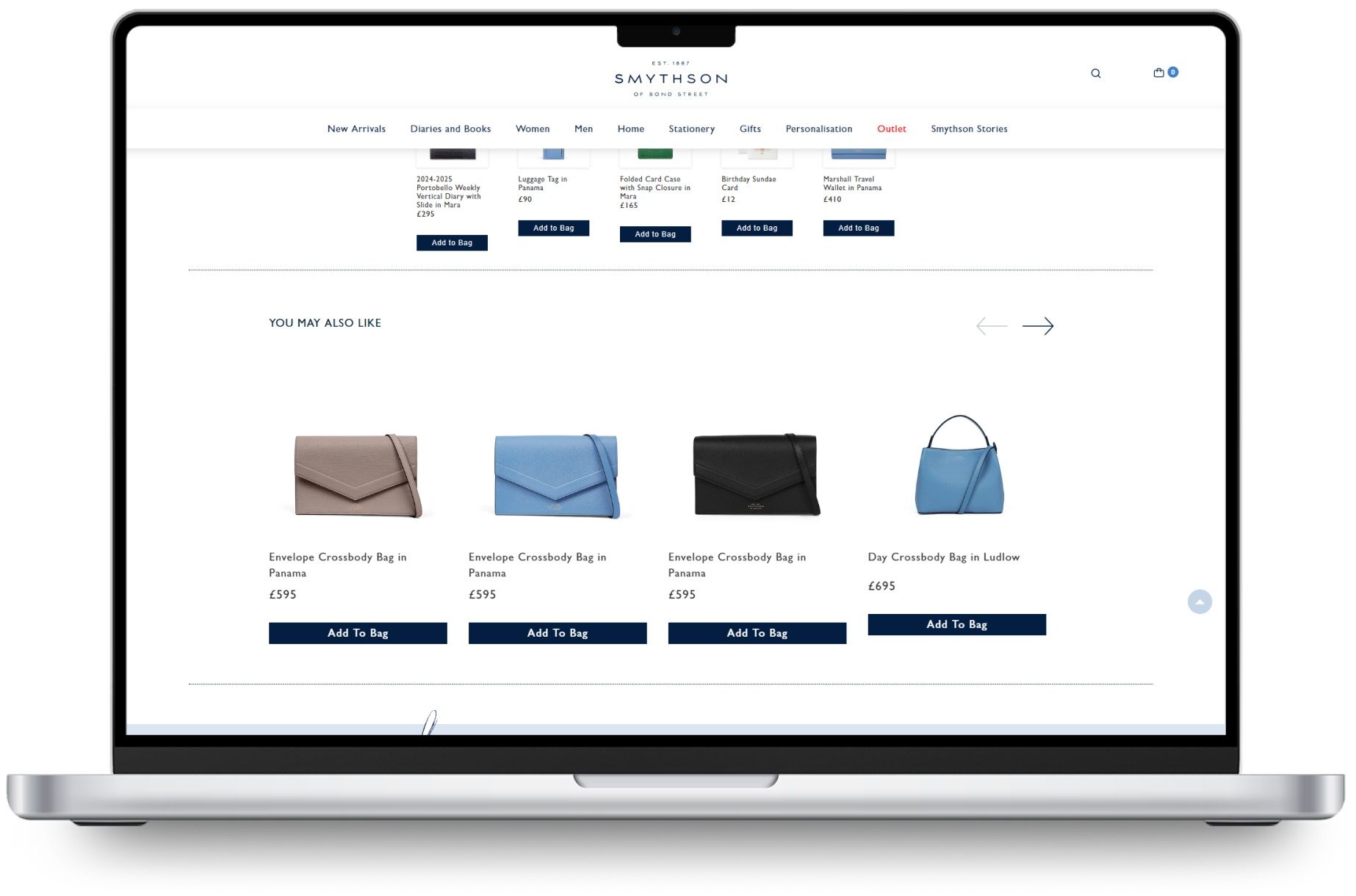
Results: The brand saw a 31% increase in conversions and a 13% increase in average order value (AOV).
💡As a best practice, you should A/B test different recommendations and test out different formulas and algorithms.
Timing is also important, as you want the engine to accumulate enough data about your customers’ preferences and not jump to conclusions based on the first page they browsed.
Measuring the Impact of Real-Time Recommendations
You can evaluate the results of your real-time personalization campaigns by tapping into the analytics platform of your product recommendation tool.
The best way to use the analytics is to A/B test different recommendation algorithms and double down on what works.
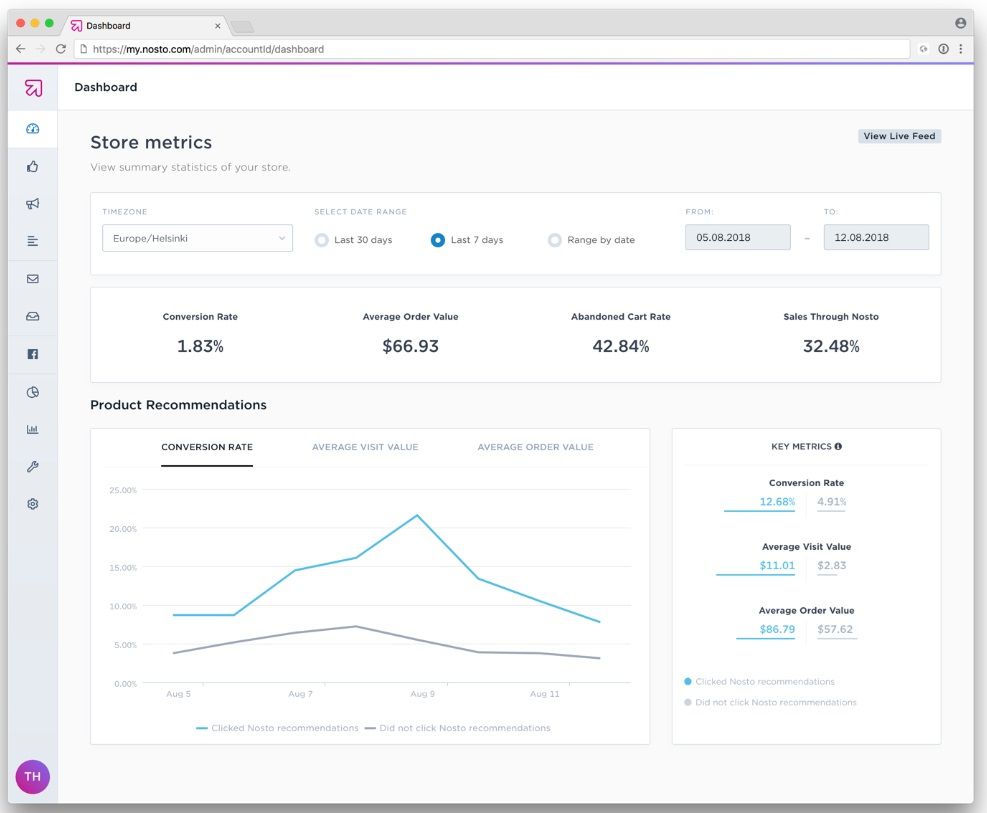
Another case study of real-time product suggestions if of Mumu, who boosted their AOV by 20% with Nosto’s product recommendations.
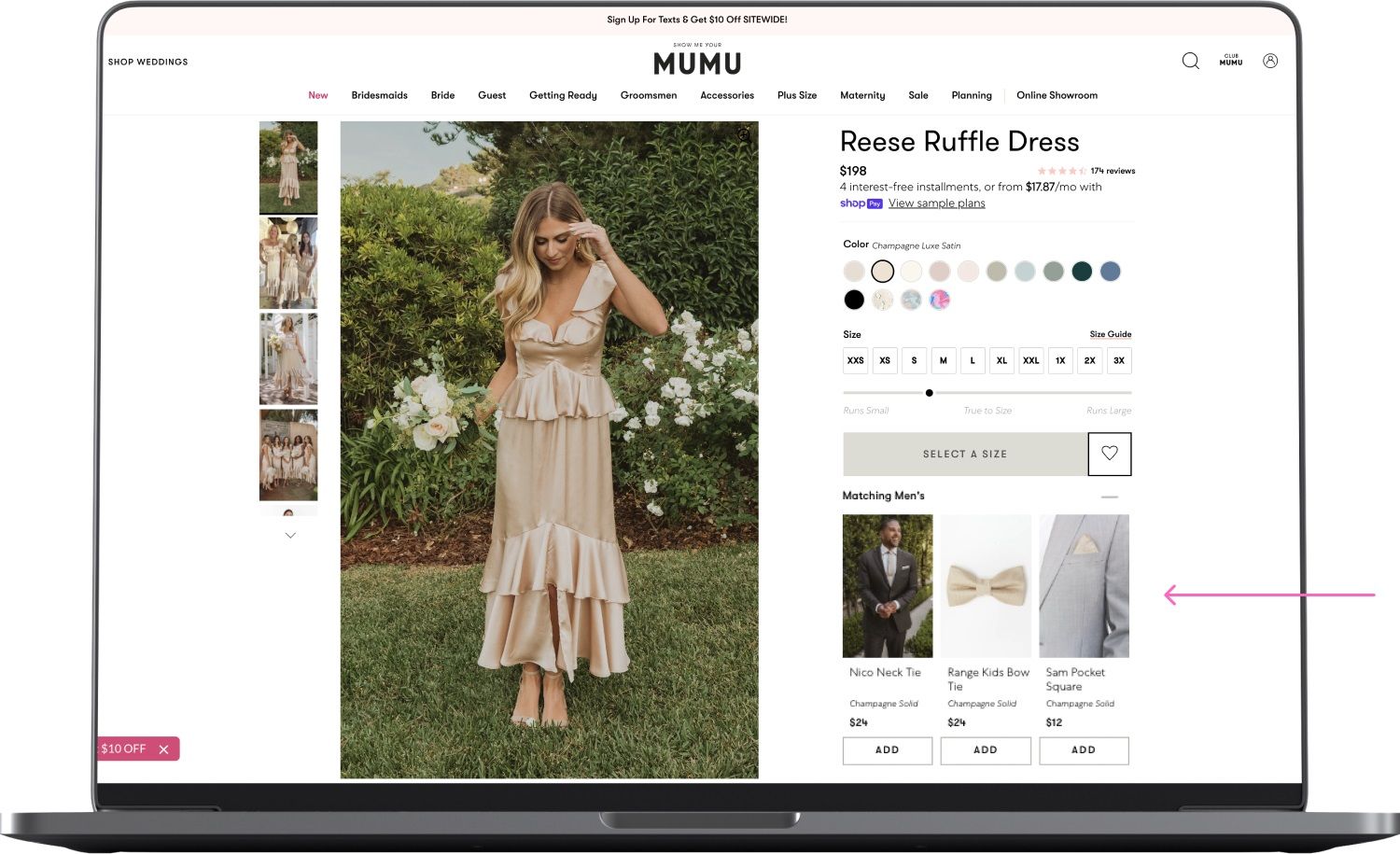
The brand incorporated product recommendations and selected custom logic that matches the bridesmaid dress color to men’s ties and accessories.
These real-time recommendations enable shoppers to curate the entire wedding party ensemble while boosting AOV for the brand.
Example #8: Product Recommendations With Deals & Discounts
You can set up product recommendations that feature personalized discounts and custom offers to nudge your customers to buy.
As 64% of online shoppers wait to buy items until they go on sale, 59% search for promotional codes before purchasing anything online.
Improve Your Store’s Conversion Rate By Coupling Recommendations with Discounts
Personalized discounts on product recommendations enable you to provide different incentives for each shopper.
You can segment your shoppers based on their browsing behavior, purchase history, or interests to offer them custom discounts that align with their expectations.
Here’s an example of building a discount campaign inside LimeSpot ⤵️
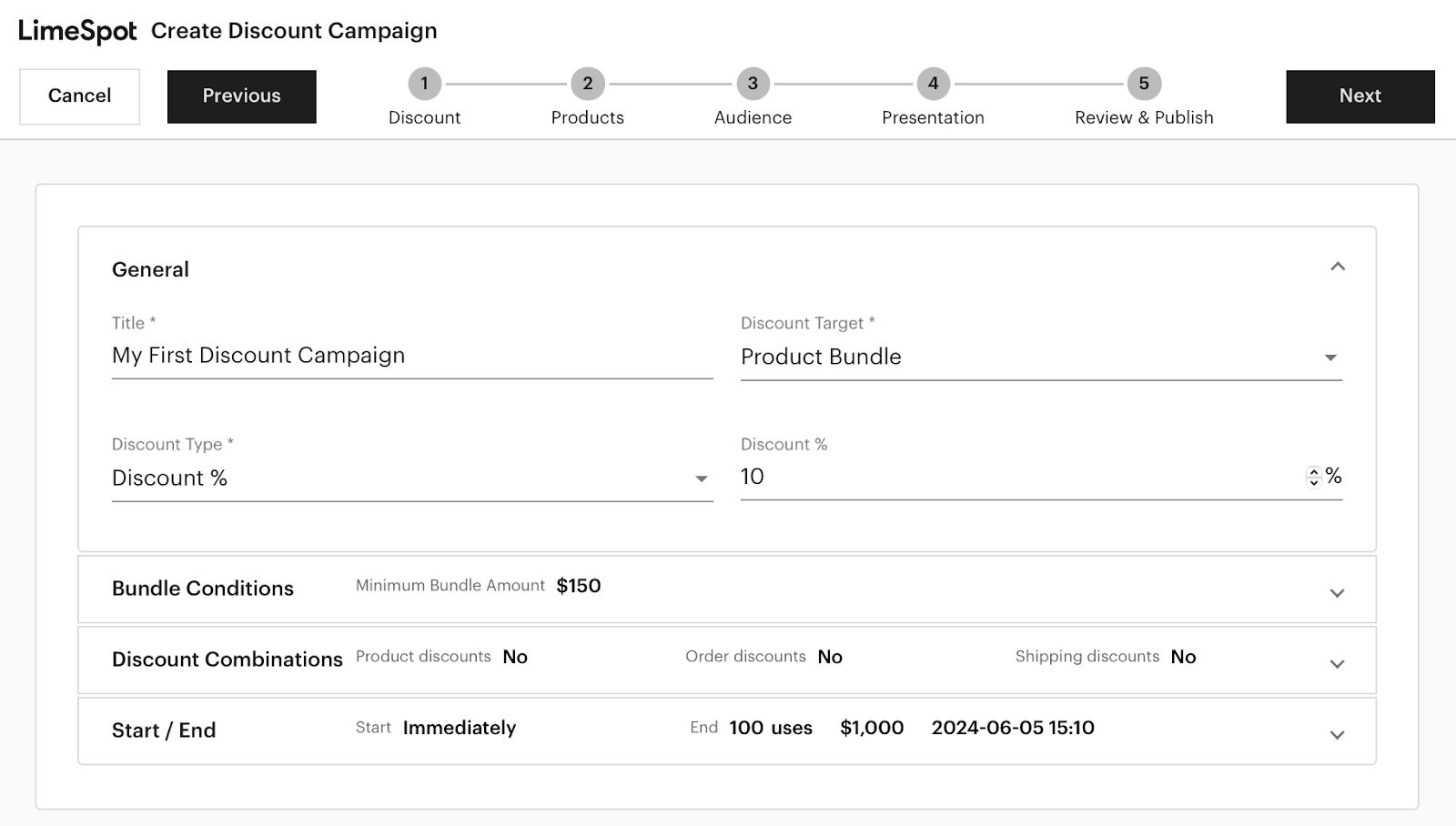
On a second level, that will save your customers the effort of searching for the best deals and discounts in your store.
💡 This is especially useful for Black Friday and the Christmas period when a lot of shoppers are browsing for deals.
Examples of Retailers Implementing Discount-Based Recommendations
Online brands are using platforms like LimeSpot to build custom product bundles that feature a discount when purchased together:
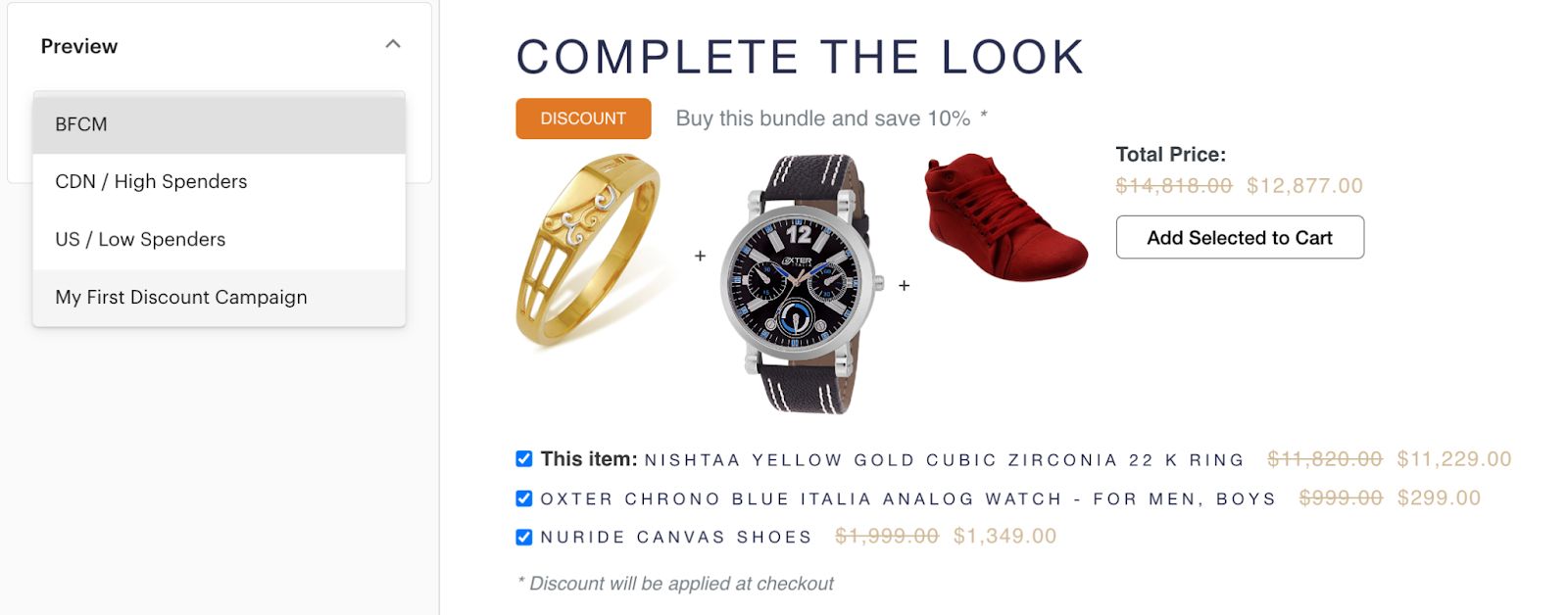
The tool enables you to conduct A/B test to evaluate results, track performance metrics, and personalize discounts to specific audience segments.
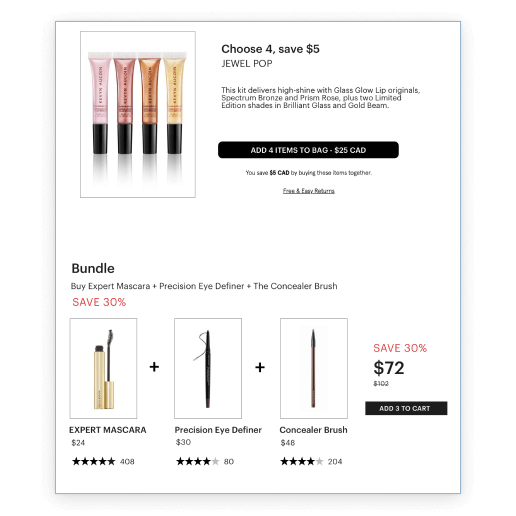
Example #9: Top Sellers
You can also recommend products based on their popularity.
The idea is not to make generic recommendations but personalized recommendations that are fuelled by the customers’ gathered information.
Up-Sell Your Customers With Your Best-Sellers
‘’Top sellers’’ are product recommendations where your brand showcases the bestsellers in the same product category as the product your shoppers are considering.
You can promote your best-sellers that have more features, or better value-for-money, across your product and category pages.
For example, Urban Outfitters is showing off their most popular products on their ‘’Gifts’’ section to nudge shoppers to find the best gift idea.
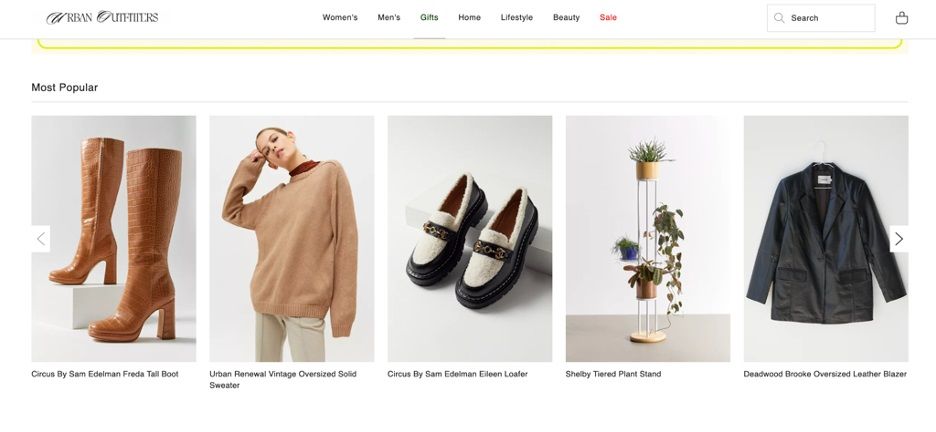
Another way to approach ‘’Top Sellers’’ is by creating a static page for it on your website and promoting it.
This is what Wyze did, where they created a category page for their best-selling products:
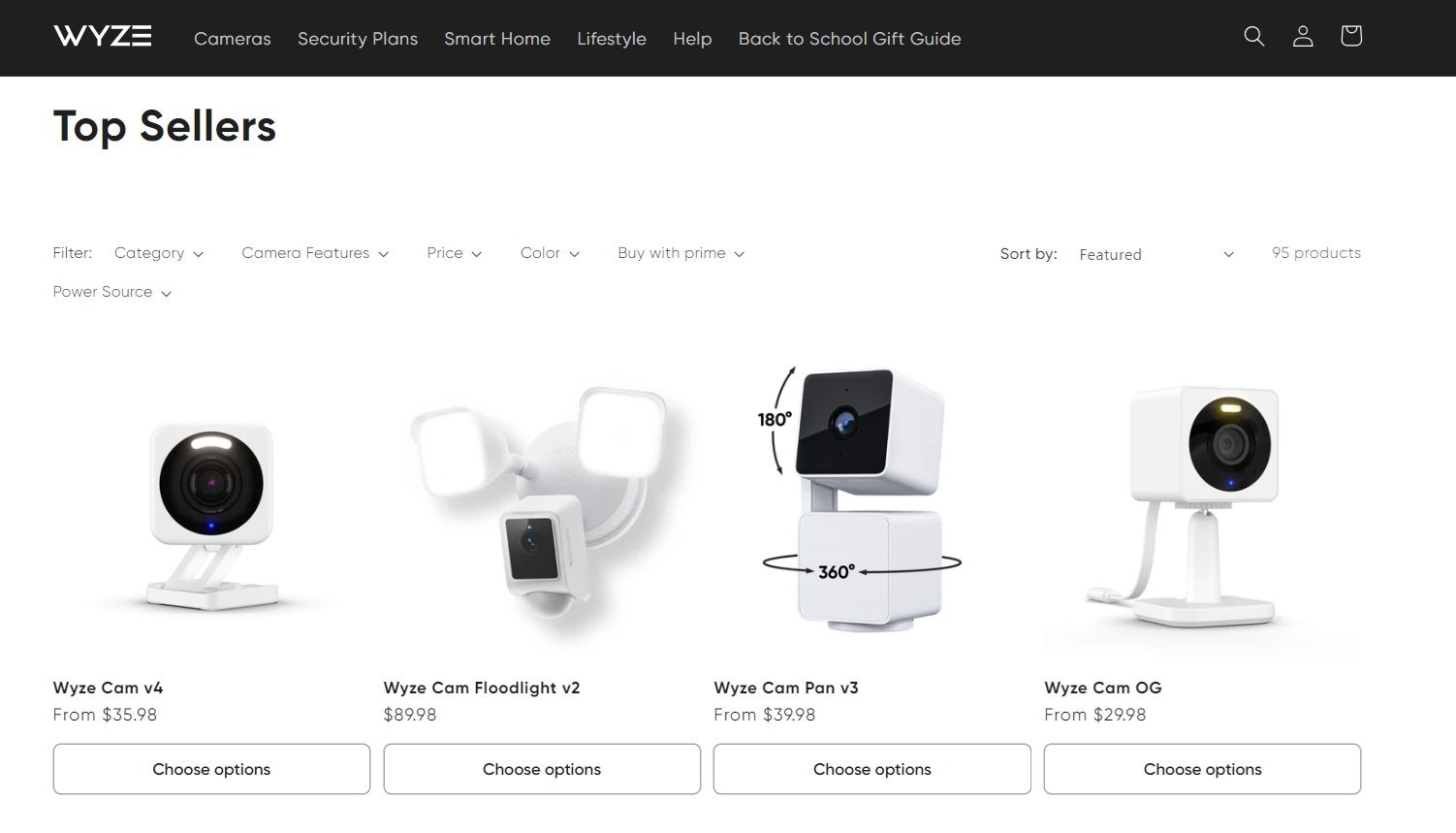
Tools To Automate ‘’Top Sellers’’
You can use a tool like Big Sur AI or Personyze to set up a ‘’Best Sellers’’ section on your product pages, home page, and collections pages.
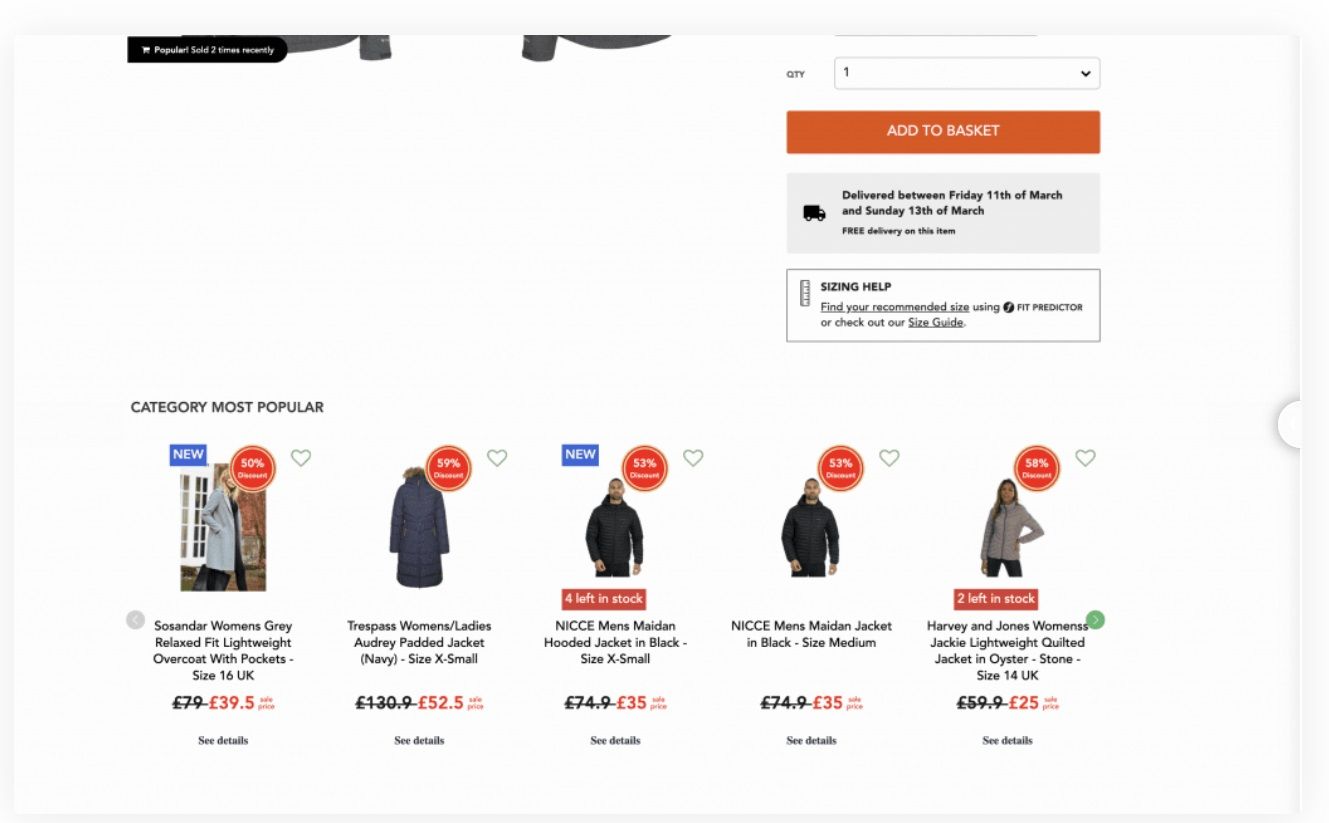
With Personyze, you can also add social proof elements to your best-seller recommendations, such as letting shoppers know how many others bought the items.
It does not all have to be on your site—you can set up Top Sellers in your transactional email campaigns.
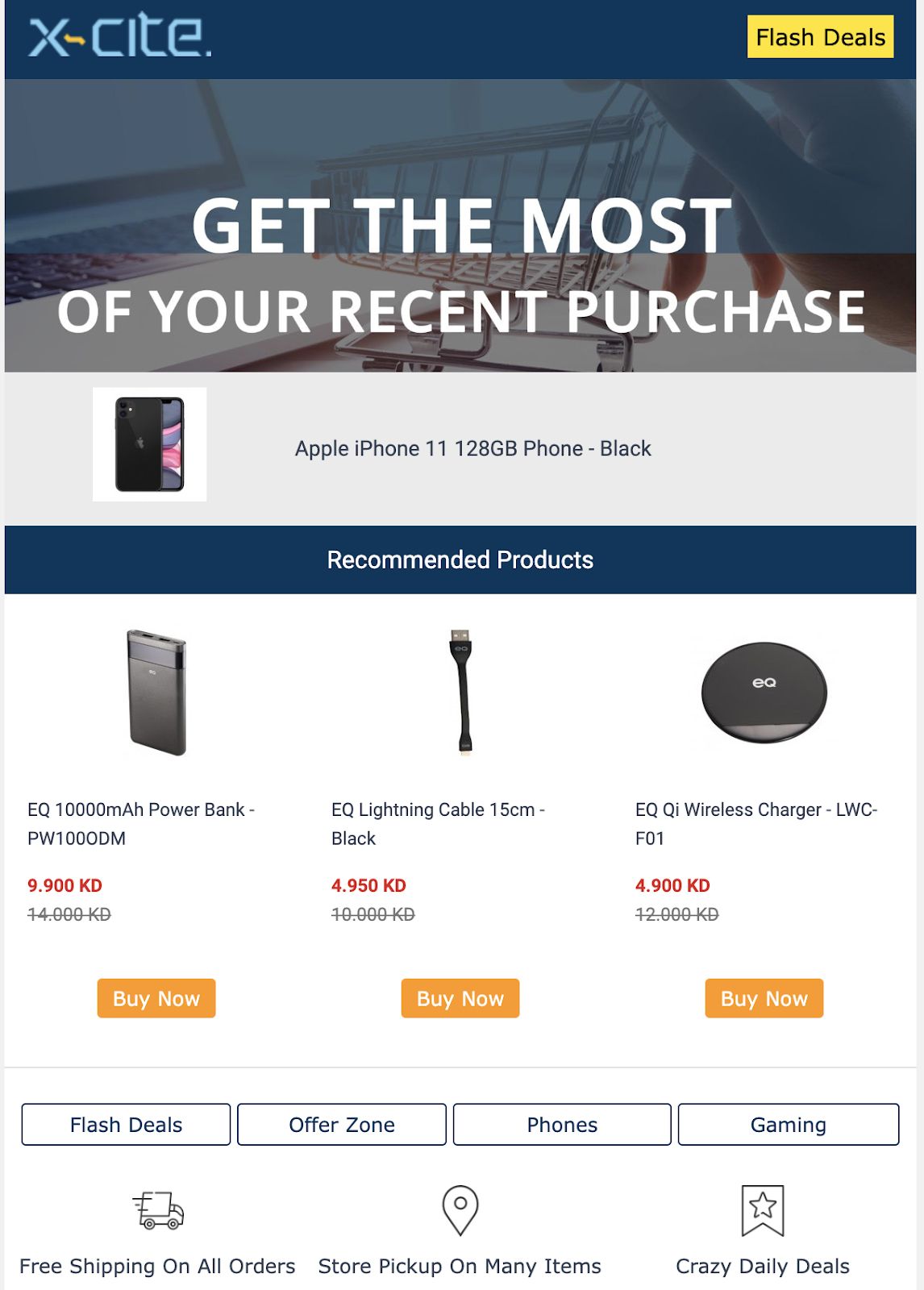
Example #10: Picked Just For You
You can make hyper-targeted recommendations to your shoppers that have been picked just for them.
These recommendations are not based on customer segments but are entirely personalized to each customer.
Hyper-Personalize The Product Recommendations To Increase Conversions
‘’Picked for you’’ is a product recommendation type that displays a selection of products that a customer is most likely to buy based on what the tool knows about them.
Since the recommendations are not just ‘’catch-all’’ or based on a segment, the customers are more likely to convert.
49% of respondents from a recent survey reported that they have made impulse purchases from such hyper-personalized product recommendations.
Online retailers like Wyze are utilizing the ‘’Just picked for you’’ product module to increase their store’s conversion rate by predicting what customers are most likely to be interested in.
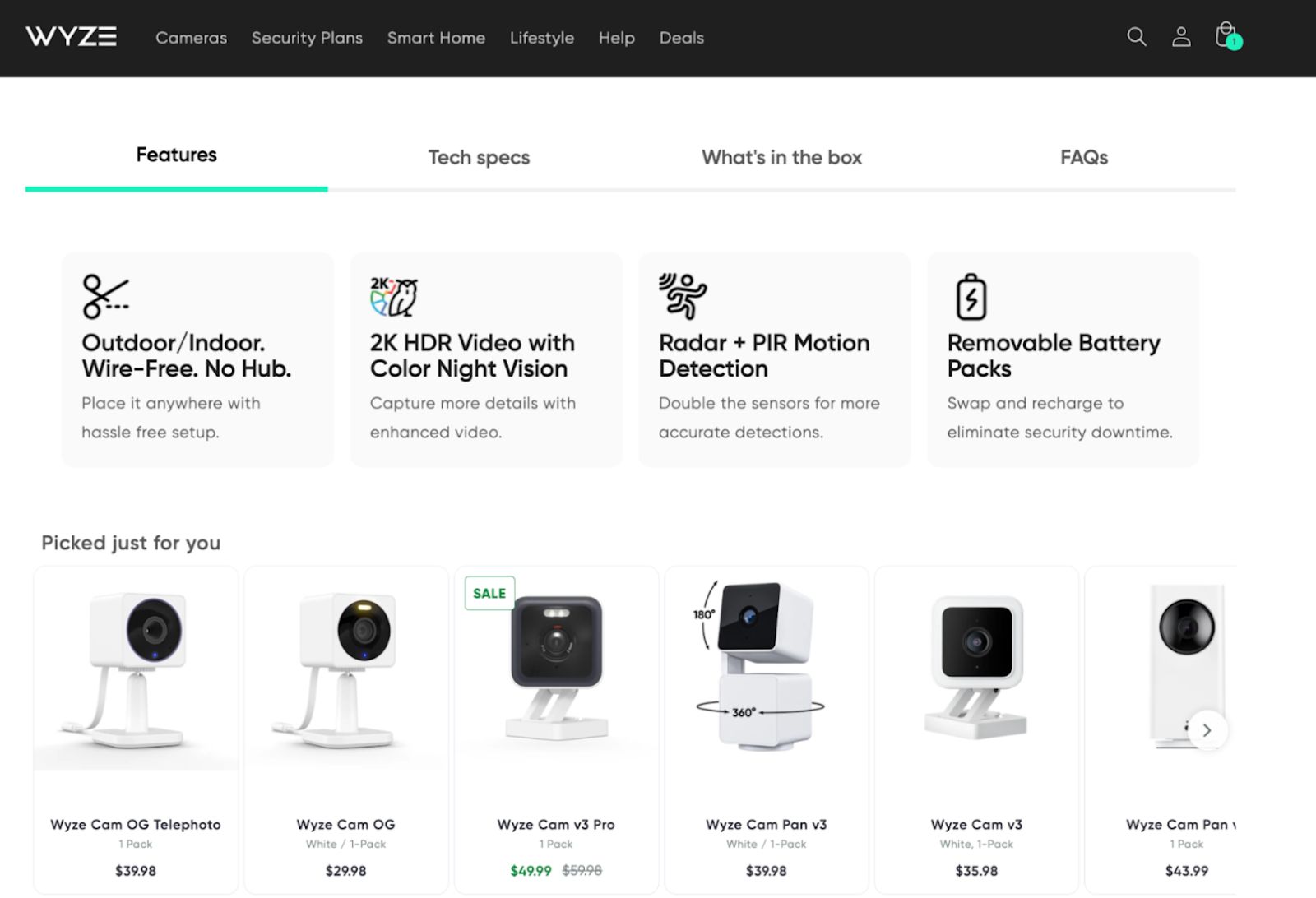
Tools To Automate ‘’Picked For You’’ Recommendations
You can use Big Sur AI’s ‘’Picked just for you’’ to help your customers find the right product for their needs.
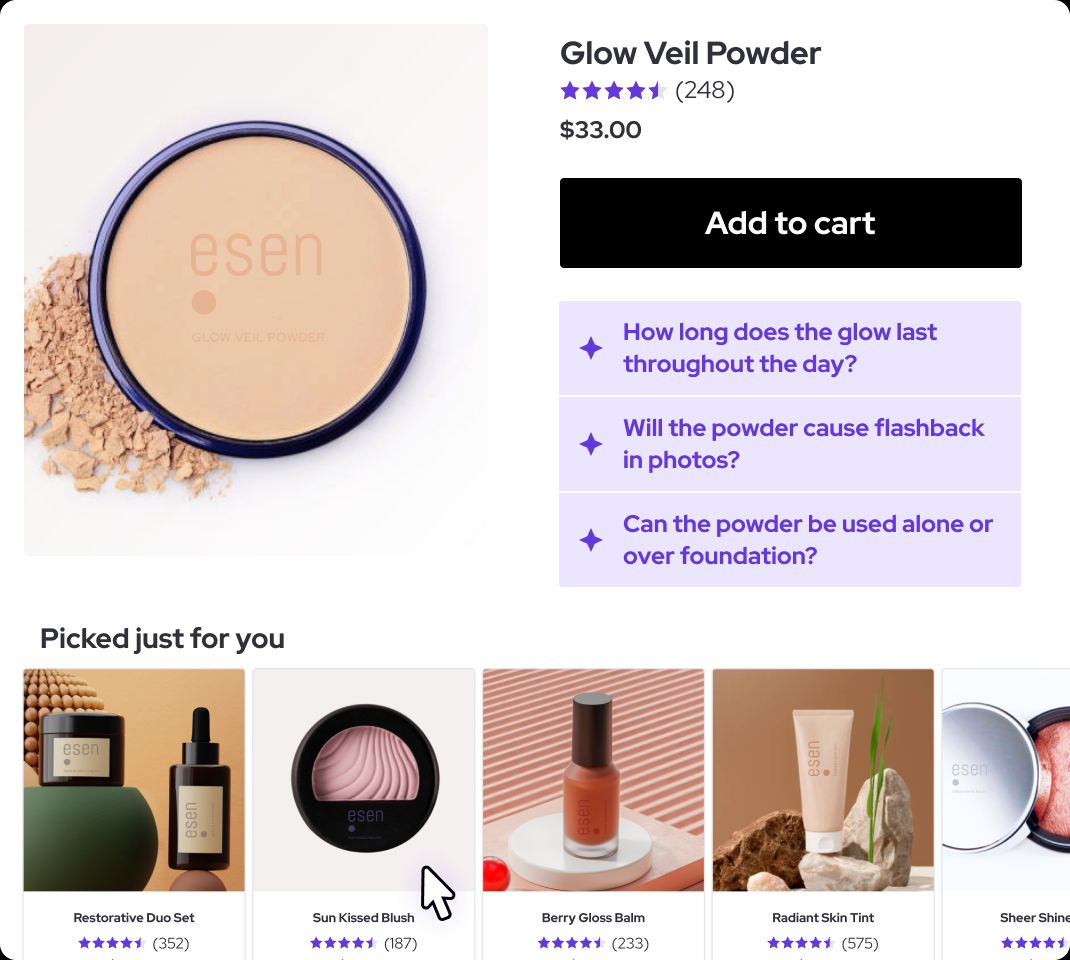
Alternatively, you can use Innonic’s Upsell Recommendations in Shopify, which uses a recommendation engine similar to Amazon's.

For example, Sephora uses a ‘’Chosen For You’’ that leverages customers' purchases and browsing behavior to offer highly relevant product recommendations.
Help Your Shoppers Find The Right Product For Their Needs With Big Sur AI
Optimize your e-commerce store with hyper-personalized product recommendations and a conversational experience that works 24/7 to assist your shoppers.
Our AI Sales Agent can guide shoppers' buying journey with personalized recommendations and conversion-optimized prompts.
The conversational experience helps your customers find the right product for their needs.
Be data-driven about what products are frequently bought together and what pre-purchase questions customers have on your website.


